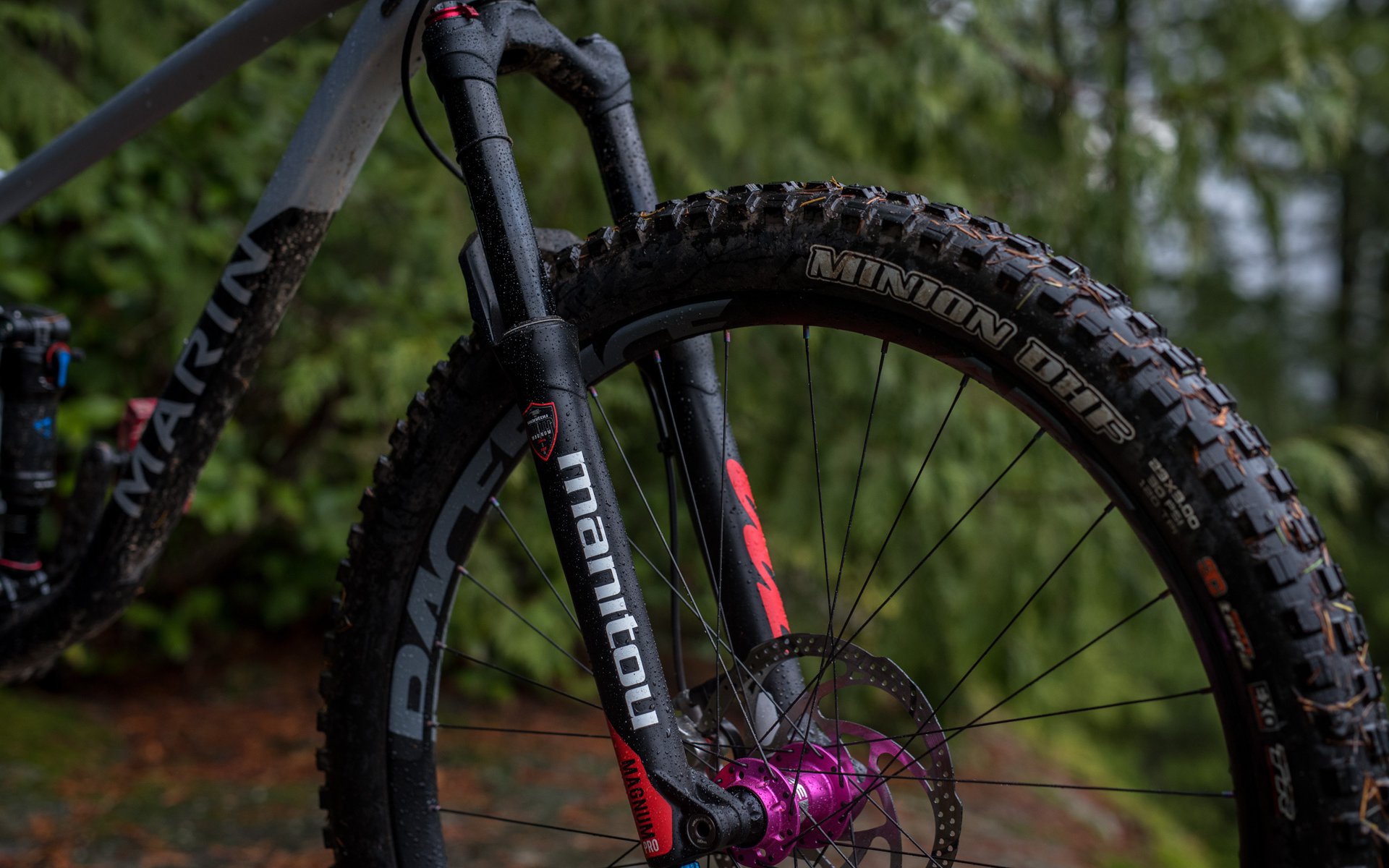
Long Term Review
Manitou Mattoc Pro Fork
My Manitou Experience
I've been working on this Mattoc review for so long that the fork actually changed names part way through. It's been on three bikes, ridden with two unique air systems (IVA & IRT) and given a partial service. Now a full service is overdue.
The Mattoc Pro has 7050 butted aluminum stanchions, a hollow forged crown and more usable adjustments than many high end forks. The 900 USD price however places it a couple hundred bucks below the competition. In the case of the 29+ version, it's easily the best 29+ specific fork on the market, with the only real competition being the 29+ RockShox Pike.

Manitou must haves: Reverse Arch,

the TPC Damper Cartridge

and the Hexlock axle.
Several factors explain the longer than usual review period. I rode the fork with both Manitou's Infinite Rate Tune (IRT) and Incremental Volume Adjust (IVA) air spring systems and it took some experimenting to find ideal settings in each case. and I wanted to beat the hell out of it to make sure there were no issues with my test unit. There's also the fact that I really didn't want to give it back.
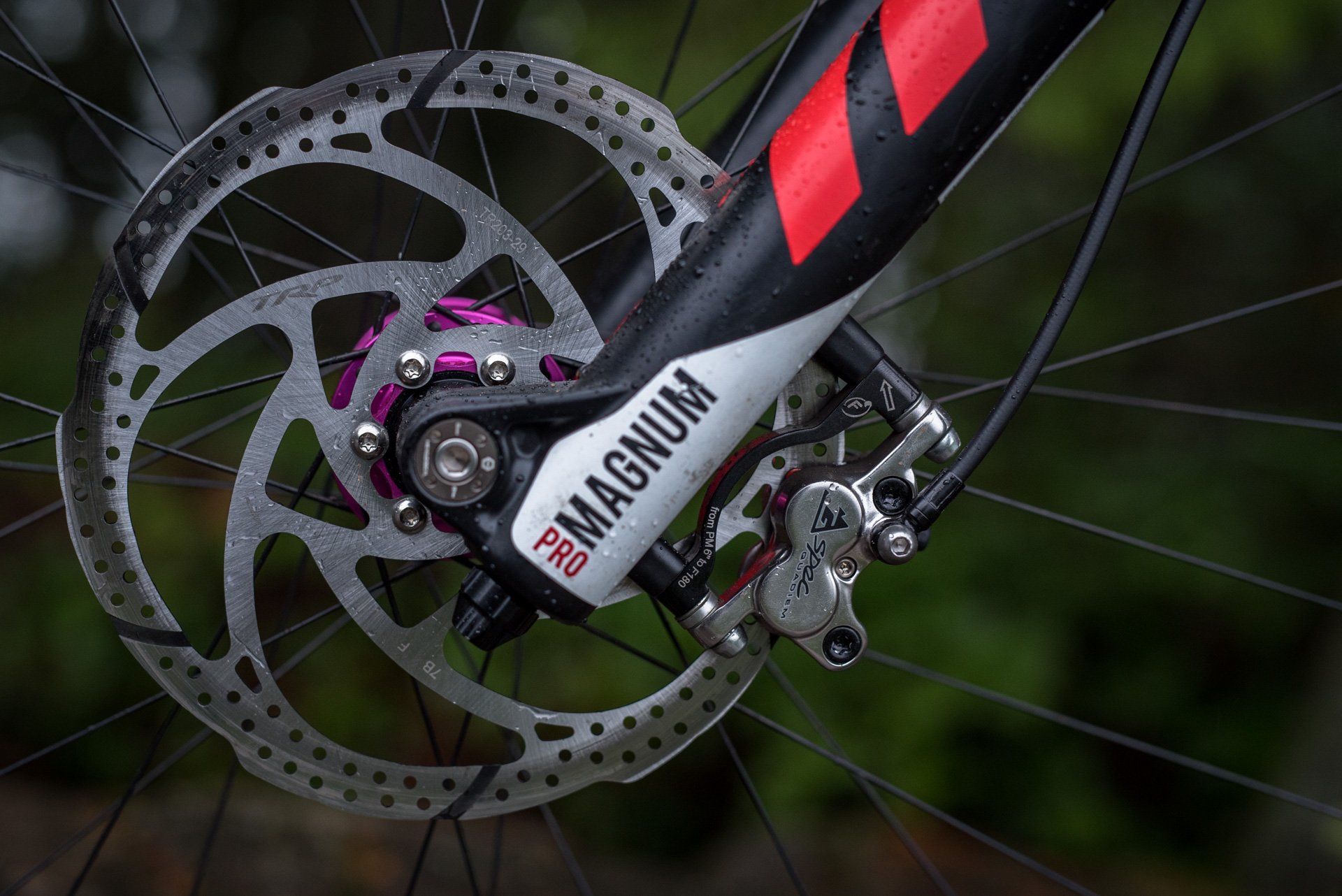
A Mattoc by any other name. The 29+ Mattoc Pro and Magnum Pro are the same animal.
Air Systems
Part way through my Manitou review what was called the Magnum Pro 29+ was streamlined into Manitou's Mattoc product line. The chassis is essentially the same so this makes sense. If you are looking at the used market or reading any other material on the forks, a Manitou Magnum Pro 29+ fork is the same monster as a Manitou Mattoc Pro 29+ fork.
The only important distinction is whether they are equipped with the IVA or IRT air system available for either unit. IVA is a set-and-forget system. I went with two volume spacers, worked out the air pressure setting for 20% sag, dialed in the damper and rode my bike. IRT is more of a tinkerers setup.

The IVA air system consists of a positive air chamber, a self-adjusting negative air chamber and volume spacers which are all housed inside the fork. Photo: Andrew Major
I ran the same damper settings with both IRT and IVA. Low speed compression (LSC) at +2 clicks, high speed compression (HSC) at +2 clicks, hydraulic bottom out at +2 clicks and the rebound set fairly fast. I never touched the LSC platform adjustment while riding because the Mattoc Pro does a great job standing up in its travel even climbing out of the saddle. With IVA, I ran +2 volume spacers and set the fork up with 20% sag. It worked great but talk about straightforward, easy, and boring setup.
With IRT, I tested pressures all over the map. The secret to good small bump and good mid-stroke support is to discover a main chamber pressure that is supple enough off the top and then to find an IRT pressure that provides massive support from the air system while not feeling notchy or disengaged from that initial travel.
For the record, thanks to Zac at Smithtech, my final settings for IRT have ended up being 70psi in the main chamber and 140psi in the IRT. That's for a 185 lbs rider. With a larger pressure gap the interplay between the air systems becomes quite noticeable but at this 70psi spread it makes for seamless travel.

The IRT air system consists of a positive air chamber, self-adjusting negative air chamber and the IRT air chamber. Photo: Andrew Major
The IRT air system, which is similar to what Ohlins has since brought to market, is worthy of its own article so I wrote one which lives here. The IRT air system is an improvement on IVA and it would be my first choice, but a rider who desires the best performance from the simplest setup will be better served by the IVA system.

A picture of IRT to save me 1000+ words.
On Trail Observations
The LSC adjuster on the Mattoc Pro is designed to be easily adjusted on the fly for more support from the damper when climbing, but I never touched it. One of the key differentiators of the fork compared to the Pike/Lyrik or the newest Fox models is how high the Mattoc rides in its travel while still delivering gobs of traction and good small bump compliance.
Getting a balanced feel between the Mattoc Pro and the basic shock on my full suspension frame was a bit trickier than I'm used to. On hardtails it's amazing how good bikes feel when forks stand tall and the geometry stays slack dropping into steep trails.
Combined with the massive front tire, and for most bike currently on the market, the 51mm offset is a good choice to balance handling and stability. Interestingly the regular Mattoc 29" uses a 48mm offset.
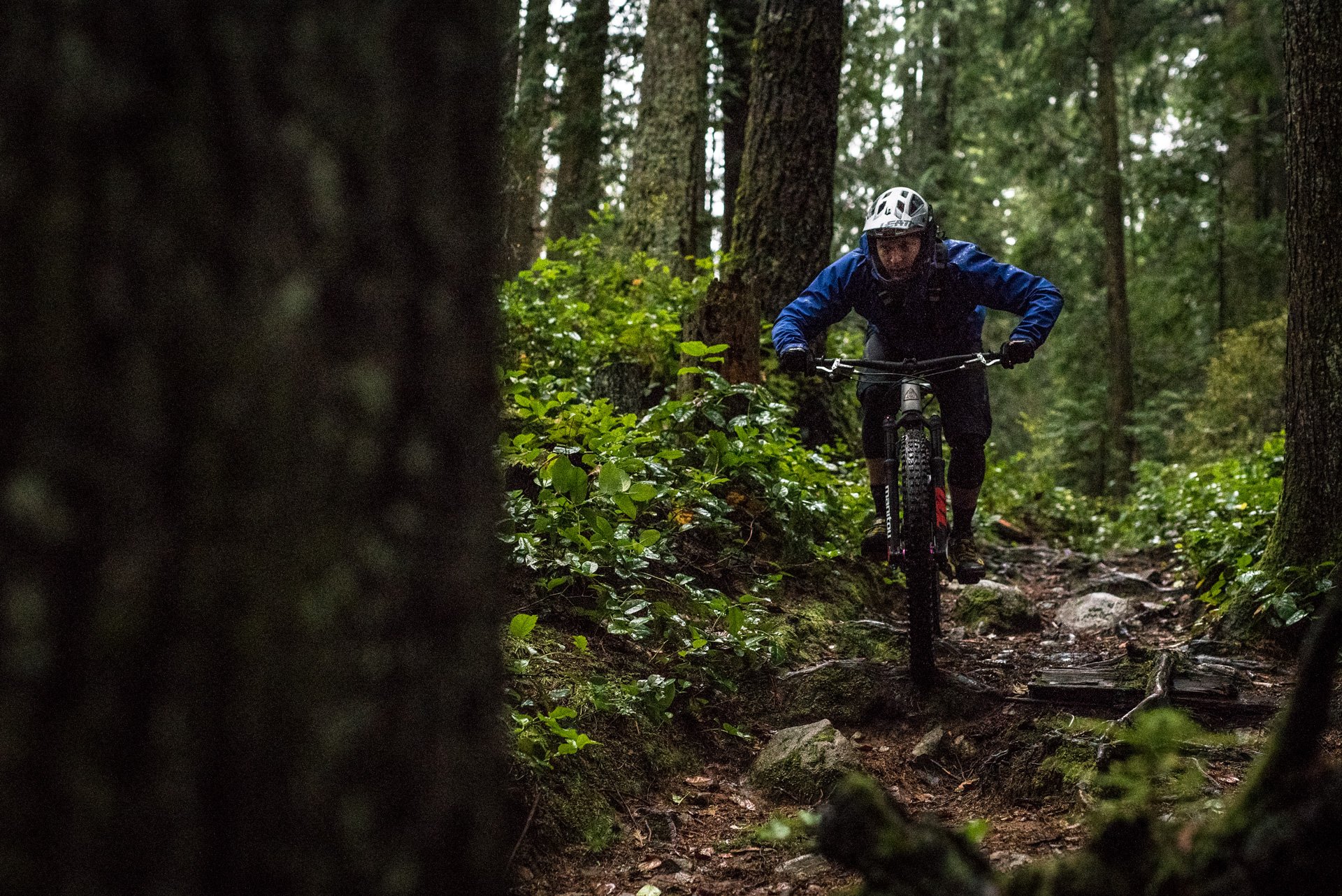
Traction is on the level with any of the premium forks on the market for the 2018.
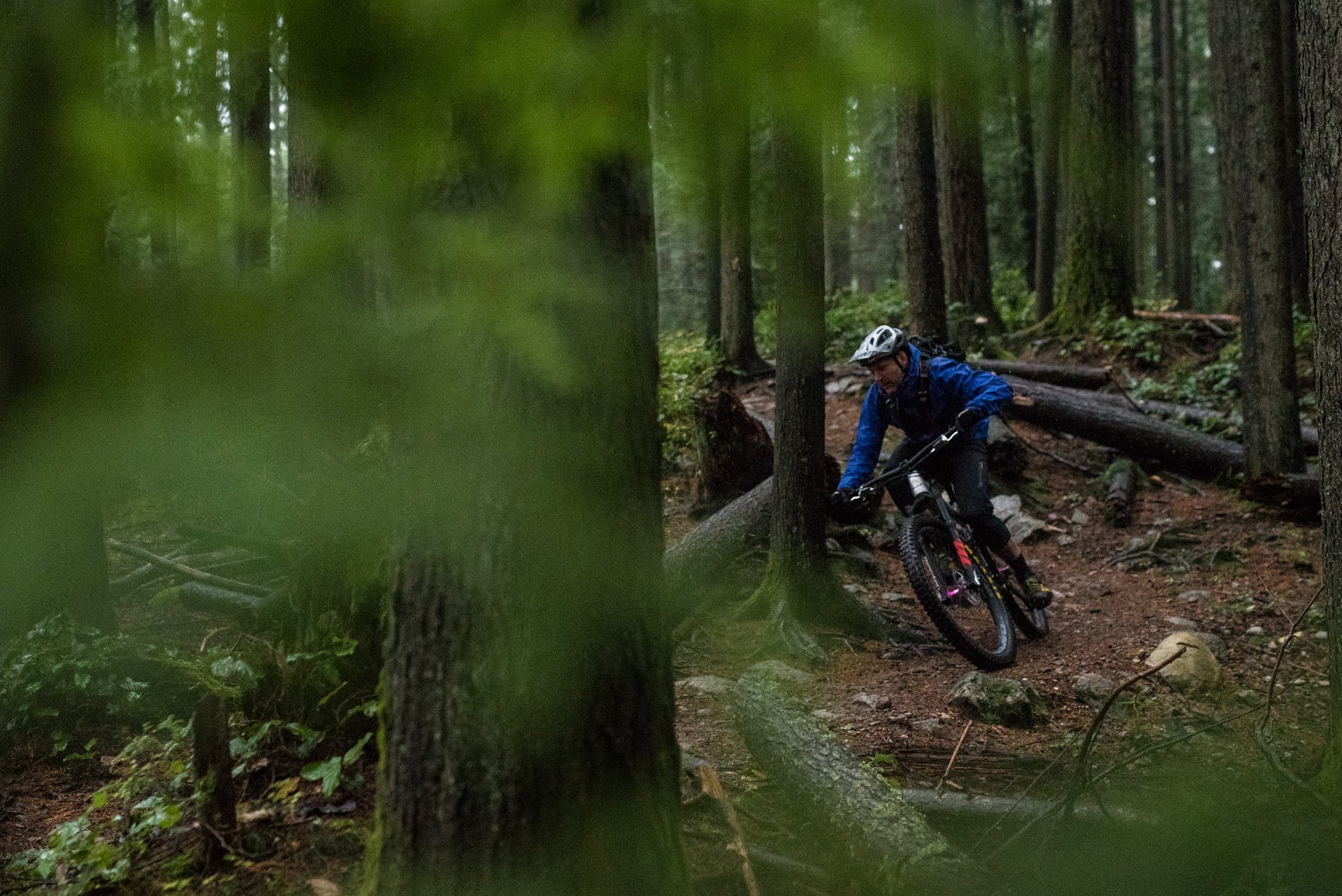
The Mattoc Pro 29+ rides high in its travel climbing or descending but still delivers great small bump performance.
Descending traction is excellent and I think that every high end fork should come with a hydraulic bottom out system. Aside from air pressure that is the feature I played with the most on the Mattoc Pro. The 29+ model delivers 120mm of travel and thanks to the bottom out system I regularly used every millimetre but never once harshly bottomed out. I looked at the hydraulic bottom out more indepth as part of the teardown article I put together with Zac.
I think only Ohlins offers a comparable balance of support and traction out of the box. Fox forks get there with updates and custom valving and RockShox is obviously appealing to a different rider preference with less-damp-and-more-ramp systems.
The chassis, despite having 34mm stanchions, is on par for stiffness with any single crown I've ridden.
Bikes
The Mattoc Pro arrived on the scene and immediately changed my Trek Stache 7 experience such that I felt it compulsory to throw on more aggressive brakes and rubber and re-review the bike. The bike went from being enjoyable to the fastest hardtail I've descended on and one of my best review experiences.
When that bike went back to Trek I ran the fork for a short while on my 2014 Kona Honzo. I wasn't surprised that bike is much more fun with a 3" DHF up front.
Currently it lives up front on my 2018 Marin Rift Zone with a 29x3" tire up front an 29x2.6" rubber in the rear which is essentially a Hawk Hill that's been trained to compete for the Russian Olympic Team.

The Mattoc Pro IVA, good brakes and a front tire transformed this Trek Stache into the fastest hardtail I've descended on. Photo: Andrew Major

#cableporn courtesy of Bikeroom-Jeff. I've ridden the Mattoc with both IVA and IRT air systems on my Marin. Photo: Andrew Major
Service
The Mattoc Pro uses Manitou's latest TPC damper cartridge with adjustable rebound, LSC, HSC and hydraulic bottom out. Sounds complicated but the system itself uses a foam compensator and is actually very straight forward to rebuild. It's a great choice for a home mechanic, especially since Manitou is hungry to help with any questions. For riders who prefer to commit their free time to riding, it's a product that any competent local shop can fully rebuild with basic tools.

Here in Canada Zac at Smithtech is happy to book you in for a service, get your preferred local shop the correct parts and knowledge or to get you set up to service your own fork. Photo: Andrew Major
The Game
Manitou doesn't have a significant OE presence and while I've noticed a few over the test period they can't touch the number of Fox, RockShox and even Ohlins forks cruising around the Shore. Like DVO that doesn't mean that a Manitou fork isn't worth considering; it just requires a little bit more research into the support in your area and a willingness to leave the herd.
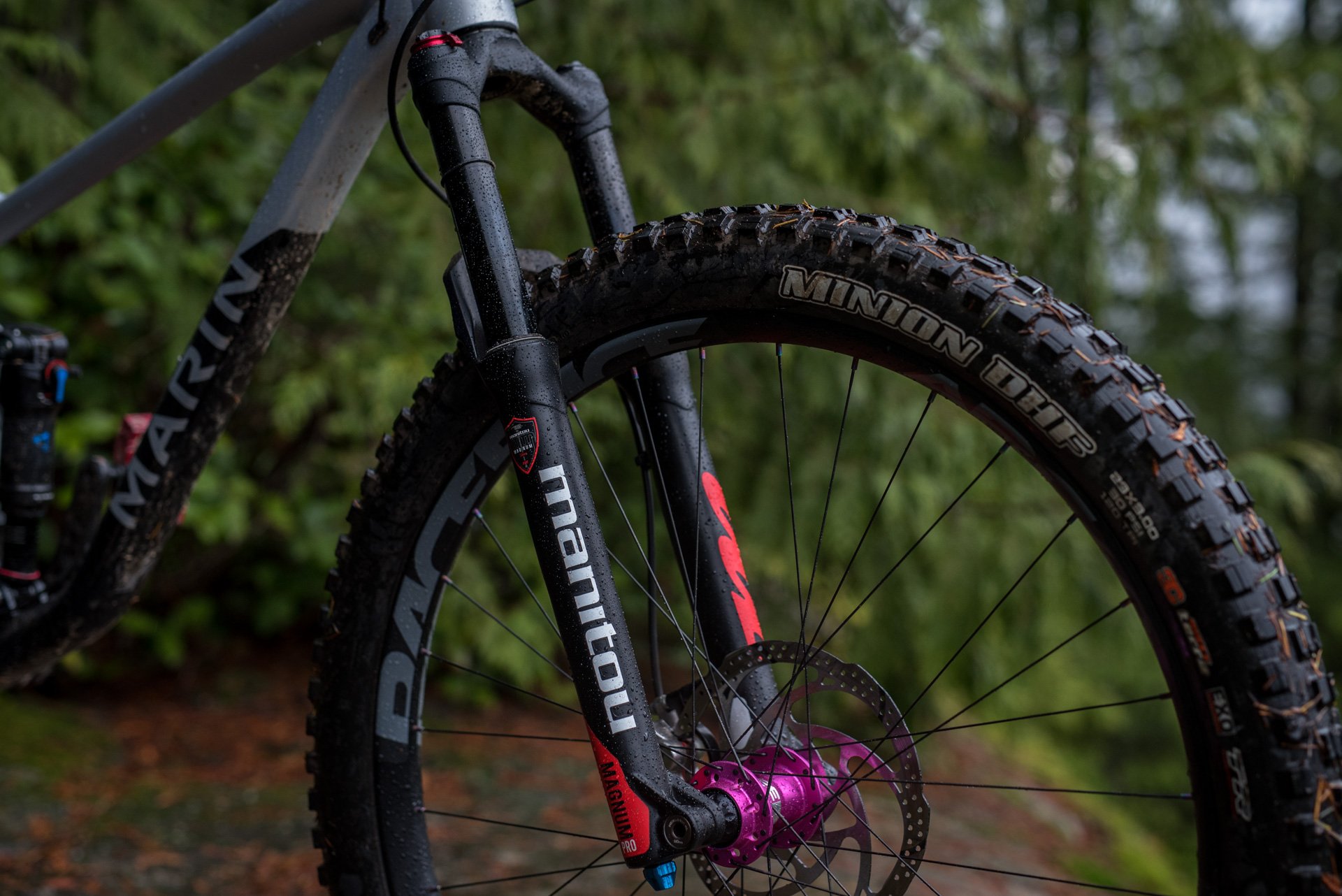
At 185lbs I'm running the IRT Mattoc Pro with 70psi in the positive air chamber, 140psi in the IRT chamber, +2 clicks of LSC, HSC and hydraulic bottom out and my rebound varies a couple by a click depending on the temperature.
Even ignoring the relative value compared to some other forks in its class, the Mattoc Pro is an excellent fork. For an SRP of 900 USD I think it presents good value. Couple that with being one of the easiest forks on the market to service and it's an obvious choice for home mechanics.
Speaking specifically of the model I'm riding, Manitou was one of the first brands to jump into 29+ and as long as the 551mm (120mm / 29+) axle to crown works with your frame it's the obvious choice for the application. Manitou sells the Mattoc Pro platform in a range of travels and wheel size options.
For more information on the Mattoc Pro please click here.

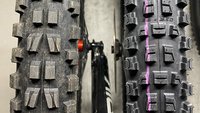



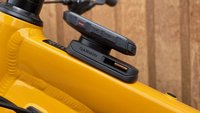

Comments
jonkranked
7 years, 5 months ago
I'm still rocking the first gen mattoc in 26" and have been a huge fan. I was stoked that the IRT upgrade add-on was compatible with it. I'd agree with the comments that it takes a little longer to setup, but I feel its worth the time invested.
Reply
lister_yu
7 years, 5 months ago
used my Mattoc for three summers and never looked back. now I´m getting a 29er and was looking for a 150 or 160 mm Manitou fork. could not find one and now I really struggle to find a good fork to replace my beloved Mattoc.
in my optinion the Mattoc is the most underrated fork of the market.
Reply
Andrew Major
7 years, 5 months ago
If I was a betting man I'd say Manitou has a longer travel Mattoc coming but to get proper bushing overlap it requires chassis updates. Budgets of smaller suspension brands being what they are they definitely 'get it'.
Can always lower a Dorado in the meantime if IRT is calling to you! (kidding)
Reply
lister_yu
7 years, 5 months ago
was thinking of the Dorado lowering too ;-)
I want to build my Starling Murmur frame end April/May. If it is available then I will definitly get one. Otherwise MRP Ribbon or DVO 29" is the "solution".
Reply
Andrew Major
7 years, 5 months ago
My experiences with DVO have been excellent as well and they have a great reputation for going the extra mile to help with tuning advice for their products.
I'll keep my ears open re. forthcoming Manitou platforms. A lot of that stuff gets announced around Sea Otter at the end of April so that may work with your timeline.
Reply
Dougal Manitou
7 years, 5 months ago
An absolutely fantastic fork. I run an original 26" mattoc with IRT and the new seals and the fork just kills it. Eats up the small chatter and feel bottomless on the big stuff. Fork just urges you to go faster and hit more jumps.
Reply
legbacon
7 years, 5 months ago
How does it compare to the competition in stiffness?
Reply
Pete Roggeman
7 years, 5 months ago
"The chassis, despite having 34mm stanchions, is on par for stiffness with any single crown I've ridden."
Reply
Andrew Major
7 years, 5 months ago
For a more specific comparison I was riding a Boost Fox 36 29” at the same time as this fork and am currently on a Boost Lyric 27”. The Mattoc is easily as stiff in all directions.
It’s a 120mm fork so that helps (leverage) but I have friends on the 27” and 29” Boost Mattocs I’m longer formats and they have zero complaints.
Reply
legbacon
7 years, 5 months ago
Thanks guys.
Reply
goose8
7 years, 5 months ago
Nice review. I have the comp version of the 27.5+ Magnum fork upgraded to the higher end dorado air spring. I like it a lot, and it's definitely stiff and capable. In response to legbacon's question, in terms of stiffness I didn't notice a difference between this fork and a pike or MRP stage. If anything, it might be torsionally stiffer. The Fox 36 is a bit stiffer, but I'd put that fork in a different category than the others I mentioned.
The Manitou works well in the cold too, better than most forks I've seen. I took mine out in -20C temps and the rebound needed to be adjusted, but I still got full travel no problem.
Random question- what bottle cage is mounted to the seat tube of the stache? Looks like a nice solution.
Reply
jonkranked
7 years, 5 months ago
i actually just serviced my fork for winter riding; i emailed Manitou's CS and they recommended for colder temps using 3wt Maxima fork oil (instead of the usual 5wt oil). It's what they put in their Mastodon fatbike fork. So far I've ridden it in temps to about -14°C and have found it to work a little better than the 5wt.
Reply
Andrew Major
7 years, 5 months ago
Mines been great in the “cold” of the Canadian South West.
That’s great info for anyone living colder. An added benefit is the automatic twice yearly maintenance to swap the oil!
Reply
Mammal
7 years, 5 months ago
On the last service of mine, Zac put in the oil that they've found is best for winter temps (something they use in rear shocks). It's been great in the cold, and seems to remain great in the warmer weather as well (+12C, and full rally mode yesterday).
Will need to ask Zac for specifics on that oil, I can't remember the brand/weight.
Reply
Andrew Major
7 years, 5 months ago
The cage is a King Ti I’ve had for getting near 20-years. Best in class product.
It’s mounted to SKS Anywhere Mounts I reviewed (here) which are a great product when used with zip ties.
Reply
Mammal
7 years, 5 months ago
Your findings on IRT pressure balance are similar to what I've found. At 170lbs, I find that 58Main/120IRT is my perfect balance for max support without any unwanted transition feedback.
Also worth mentioning for anyone considering these forks or upgrading:
The new low friction seals that Manitou offers give the fork outstanding small bump compliance, even several months after a service. After installing the new seals my fork remains feeling like it's just had a fresh service, but I've been riding on it for 3 months in the sloppiest of conditions. If you have a Mattoc without the new seals, you need them. Straight up.
Reply
Andrew Major
7 years, 5 months ago
‘Unwanted transition feedback’ is a great way of putting that.
Yes, I will update the review once I’ve ridden the new seals. Working on getting that together this week.
Reply
Mammal
7 years, 5 months ago
They make way more of a difference than I anticipated. Every ride feels like a fresh rebuild.
Reply
Carmel
7 years, 5 months ago
SKF seals also made a world of a difference in mine, I guess they are similar. The original seals had to be relubed every couple of weeks, probably due to the extra oil seals.
Reply
Mammal
7 years, 5 months ago
Interesting. Apparently Manitou tested with SKF as well, but chose to go with a different brand for their low friction seals.
Reply
Holger Baer
7 years, 5 months ago
when I want to replace my 51mm offset 29er fork with 140mm I have to go 29+ Mattoc. But is the A/C Height correct with 120mm travel I get 551mm height??? thats quite tall.
Reply
Andrew Major
7 years, 5 months ago
As someone who has played with offsets quite a bit, unless I wanted to run 29+ I’d stick with a regular 29 Mattoc with the 48mm offset.
It would be noticeable in the form of a bit more stability at speed and a bit more sluggish handling slowly picking through trails. A slightly shorter stem or narrower bar would correct those features if I didn’t like it.
Reply
el_mixell
7 years, 5 months ago
Thanks for the review Andrew.
I am looking at something like this for a new Honzo ST build I'm working on... What sort of max tyre clearance do you get in the regular 29 Mattoc? I'm thinking of running something in the 2.6 range up front but I'm not sure if I would ever go full plus (...I guess it's nice to have the option though). Also whats the max travel possible in the 29+?
Reply
Andrew Major
7 years, 5 months ago
Thanks for reading!
Okay, so facts first: The 29+ Mattoc Pro maxes out at 120mm travel. The regular 29" Mattoc probably doesn't clear a real 2.6" tire on a 30-35mm rim. I say probably because I don't have the fork to stick my 2.6" Bontrager SE4 into to confirm myself.
So I have opinions about hardtails that are hard earned and I'm not looking to change yours but food for thought if you're interested. If I was buying a sick new (purple) Honzo I'd be running it with a 120mm 29+ Mattoc, a RaceFace Arc 40 rim and a 29x3" Bontrager SE4 (or a Minion DHF 3" if I wanted easier steering and less straight line braking) with zero second thoughts.
The 120mm Mattoc 29+ and 3" SE4 hits in the geometry sweet spot and makes for an aggressive package that will see less geometry change when trails get steep and nasty. On the Stache and my old 2014 Honzo it is absolute sh*ts and giggles.
More suspension - or forks that dive into their travel - just means more geometry change. When it comes to the order of operations for hardtails I'm going Geo / Tires / Brakes as the top three with actually suspension travel in mm a distant 4th. Then again, I do love rigid bikes.
Cheers,
Reply
el_mixell
7 years, 5 months ago
Cheers Andrew... hard earned advice is usually the best.
Reply
Penor
6 years, 4 months ago
Andrew, first, thank you for the great article. This review hits home on so many fronts for me and I’d really like to pick your brain. I apologize for the lengthy post.
I own a 2016 Stache 7. I’ve upgraded the brakes to SRAM Guide RS, and changed the Chupa’s over to the new Bonti SE4 29X3 (F/R). I’m currently running the SE4’s on the stock Sun Mulefut rims (45i). I run low pressures (9.5 psi Front/11 psi Rear @ 158 lbs. body weight). I am getting ready to order a custom wheelset with Oynx hubs. The rim choice is what is holding me back. After tons of research I’d settled on a 45mm internal rim width, and all but settled on the RF ARC 45. That said, I am really interested in the new RF ARC 40 Offset rims, but I’d ruled them out because I am afraid they will not allow me to run as low of pressures and that the decreased air volume may harshen the ride, which is the last thing I want to do. I have bi-lateral hip replacements and I need all of the traction and cushion I can get. Your comment here that given the choice for a new build, you’d choose a RF ARC 40, has really caused me to start rethinking all over again. What are your thoughts, opinions, and suggestions here?
On to the fork - I am reading your article because I am contemplating upgrading to the new Manitou Mattoc Pro w/IRT. I am currently running the stock Manitou Magnum Comp fork with the new low-friction seal kit. Honestly I have no issues (that I am aware of) with my fork, but if the Mattoc Pro will offer a far superior ride then I want to upgrade. I just don’t want to drop a grand for something that is somewhat better than I currently have, but nothing earth shattering. Note that I have read your article on the Trek Stache 29+ Retrial. I agree that the weakest links of the Stache are the stock brakes and the stock Chupa tires. Changing the tires to the SE4’s has made a tremendous improvement in traction and handling. So my question is, that after already changing the tires, is upgrading to the Mattoc Pro w/IRT going to be a major upgrade?
Reply
Holger Baer
7 years, 5 months ago
it probably slacked out the rift zone quite a bit. especially with that monster tire in front. how did it work out?
Reply
Andrew Major
7 years, 5 months ago
Running regular 29x2.4” tires in the 120mm Mattoc the AC is 1cm taller than the setup on the B17 (which runs a 130mm Boost RS on the same chassis). That’s not even 1/2 a degree change to HTA and STA at sag - especially since I run the rear fairly firm.
With the 29+ SE4 I’m running everything is awesome with the handling except the seat angle which starts to get a bit slack. I compensate by running the saddle forward on a zero-offset post and it suits my needs well.
If I was custom building a Rift Zone I’d crank the STA a couple degrees steeper for my specific setup but the rest of the geo is great with 120mm/29+
Reply
Poz
7 years, 5 months ago
I was looking forward to this review. Ive been on a first gen Mattoc Pro for two years and definitely find it an under rated fork. I'm no lightweight and rode this fork several days at silver star, there is some flex but nothing beyond expected of a single crown i this category.
I have an Irt on order with S4 and cant wait to install
Reply
Andrew Major
7 years, 5 months ago
If you can pick up a set of the new seals for your rebuild they do certainly make a difference to friction fresh vs fresh.
I don’t have enough hours to comment further but it seems to be universally accepted they feel fresh longer as well.
Reply
Poz
7 years, 5 months ago
Ya new seals seem like a good idea. Was looking at after-market but sounds like the OEM may be the way to go.
Reply
Martin
7 years, 5 months ago
Hi Andrew!
Do you have a Rift Zone review coming up? I'm torn between the new ´18 Rift Zone and a '18 Devinci Marshall and altough I liked my Marshall test, I can't try the Marin before buying. Looking forward to hear your inpressions on the rear suspension performance and the different setups you've tried. Cheers!
Reply
Andrew Major
7 years, 5 months ago
Hi Martin, I won't be writing a review of the Rift Zone. It is my personal bike and as a rule, we don't review our own stuff on NSMB. The bike just shows up a lot in my content as I use it to test mule for a lot of product I am reviewing.
A few reasons that it ticked all the boxes for me:
-Aggressive geometry in a shorter travel package.
-Works with all three wheel setups I like: 27+, 29" and 29"/29+ mix.
-Steep enough (barely) STA even with 29+ front wheel and 120mm 29+ fork.
-'Standard' ZS44/ZS56 headset
-Threaded BB
-Long reach that is not achieved by running a short stack height (the large is almost too long for me).
-Tuned anti-squat/anti-rise so pedals aggressively out of the saddle
-Progressive rear suspension is very coil shock upgrade friendly (my next purchase).
-Company with a great reputation for supporting their products.
-I knew I would like the bike as it is essentially the Hawk Hill I tested + 29" wheels.
And of course, the key feature is that I get all of that at a price point that works for a fulltime dad/part-time bike industry hack such as myself.
The Rift Zone/B17 is not light. The frame isn't a sexy example of the furthest extents of aluminum manufacturing like say a Trek Fuel and doesn't have the small-scale industrial beauty of say a Guerilla Gravity bike but it's also a platform that is available starting at $1500 US for a complete bike.
I think the RF is an excellent example of how frame and suspension geometry is irrelevant to the price point of a bike.
I'm happy to discuss further or to answer any specific questions. You can hit me on the Instagram messenger (link at the top of the article) or fire me an e-mail: andrew.major(at)nsmb(dot)com
Reply
formartha
4 years, 4 months ago
Any issue taking 29+ for a regular 29er bike?
I'm not sure what's the difference except the understandable highet of the bridge.
Reply
Recrider
4 years, 4 months ago
I am running the 29+ 120mm version with IRT upgrade on my Specialized Fuse 27+ with 3.0" tires and it works really well. You will have stacks of real estate above the tire and at sides. The only sacrifice is the axle to crown distance which will affect your geometry and possibly any frame warranty.
Reply
Please log in to leave a comment.